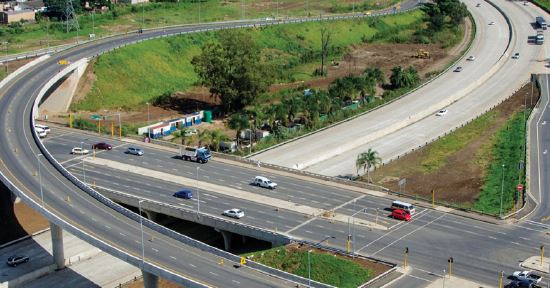Foundation for Growth
Infrastructure development is the foundation for poverty reduction and economic growth in developing countries. The long-term success and participation in the global market by KwaZulu-Natal, as a Province with a vision to be one of the primary gateways into Africa, will be in its ability to maintain and improve its transport and logistics infrastructure.
The Province has adopted a target of increasing investment in capital infrastructure from the current 16.5% of GDP to 25% by 2020. The development of an Integrated Infrastructure Master Plan for the Province is well underway and is being developed with all the infrastructure related authorities. The key infrastructure areas to be focused on are the harbours, airports, road, rail, water, sanitation, electricity. ICT, school and health facilities, human settlements, as well as specialist infrastructure to support lead economic sectors in the Province.
These developments all form part of the National Infrastructure Plan, implemented through the Presidential Infrastructure Coordinating Commission (PICC) and the 18 Strategic Integrated Projects, referred to as SIPs which it presides over. As a Province we are participating in 15 of these SIPs which of direct significance to us in KwaZulu-Natal.
PortsWith the revamping and extension of the Port of Durban already well underway at an estimated cost of more than R 22 billion, and the new Dugout Port in an advanced stage of detailed planning, as well as further expansions planned for the Port of Richards Bay, we are set to see many more cranes on the KwaZulu-Natal skyline.
Roads and RailThe road and rail networks carry the life blood of our economy in the form of cargo and passengers. Improving and expanding the cargo handling capacity of the Durban and Richard Bay ports immediately implies that adequate and appropriate rail and road network capacity is provided to improve linkages with other parts of the country, as well as with bordering countries.
Currently an improvement in the quality of our provincial roads has been reported with less than 43% of roads categorised as poor, compared to 52% in 2010. A similar trend is experienced with the national roads where less than 2% are now classified as poor, compared to 15% in 2010. An over-burdened road network and under-utilised rail network are however factors contributing to infrastructural deficiencies in the province. Because of the acknowledged lack of investment in public infrastructure spanning some years, freight is more effectively moved by road, which overburdens the road network. It is for this reason that the primary focus over the next five years will be on:
- Working with Transnet to ensure the expansion of and maintenance of the core rail freight network, as well as on exploring opportunities for the manufacturing and servicing of the required rolling stock within the Province
- Ensuring that the branch rail lines are revitalised to prevent further movement of goods from rail to road
- Creating additional capacity along primary movement corridors in the Province
- Maintaining secondary road networks
- Extending rural road access in support of rural development initiatives Working with PRASA to improve passenger rail services and to explore the possibility of establishing high speed rail connections in the Province; and developing integrated public transport services.
